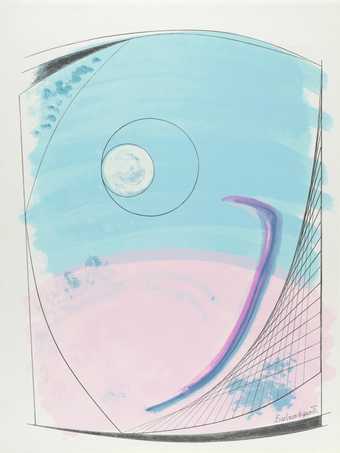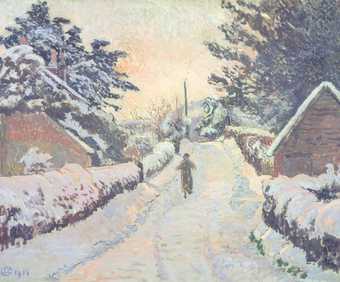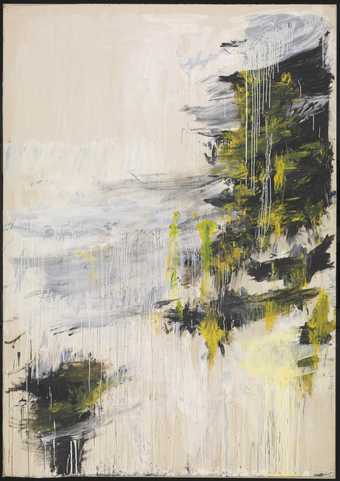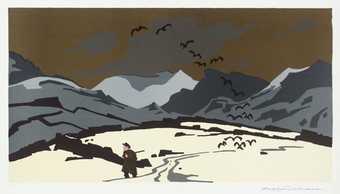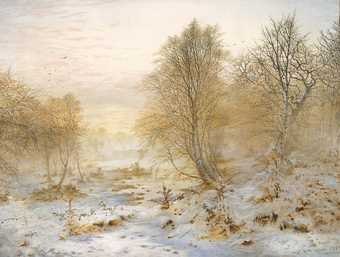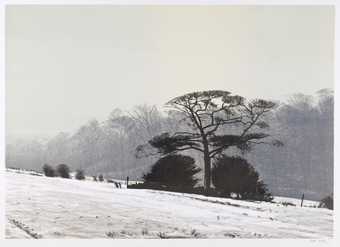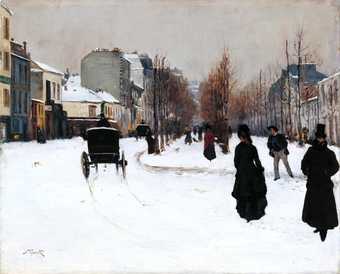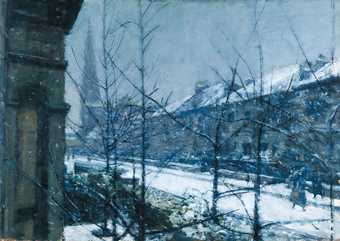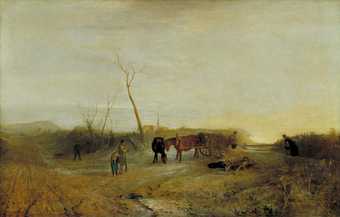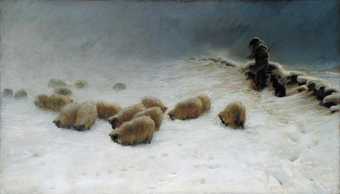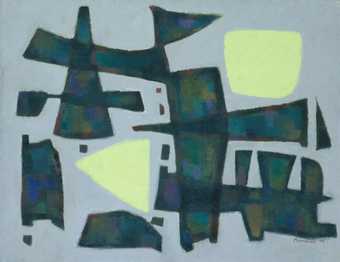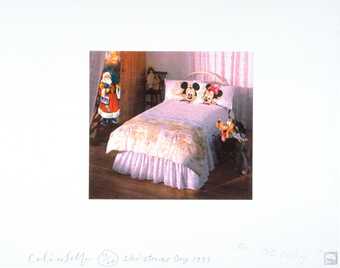Winter in the northern hemisphere is a time of short days, cold winds, frosty walks and heavy knitwear. It's a season that indicates the closing of an old year and the birth of another.
This season has always inspired artists. Some choose to reflect human emotions in the ice, snow and mist. Others show a realistic view of winter, from the early morning light on frost-covered trees to city architecture covered with snow. In the twentieth century artists have explored the season through an abstract lens.
Here are a selection of artworks from our collection that show the different ways that artists have chosen to depict winter.
Peter Doig, Ski Jacket 1994
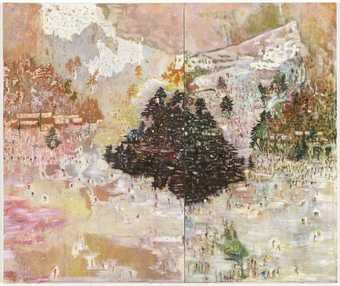
Peter Doig
Ski Jacket
(1994)
Tate
A newspaper photograph of learner skiers on a Japanese mountain inspired Peter Doig to create this picture. He often paints snow scenes because ‘snow somehow has the effect of drawing you inwards and is frequently used to suggest retrospection and nostalgia and make-believe’.
Wilhelmina Barns-Graham, Glacier Crystal, Grindelwald 1950
Winter has inspired artists to create artworks that use colours, shapes and marks to evoke the season. They are abstract works but are influenced by real scenes or experiences.
Wilhelmina Barns-Graham painted this following a visit to the Grindelwald Glacier in Switzerland. She was inspired by its immense size, the way light played upon its surface, and the contrast between its solidity and glass-like transparency.
Marie-Louise Von Motesiczky, View from the Window, Vienna 1925
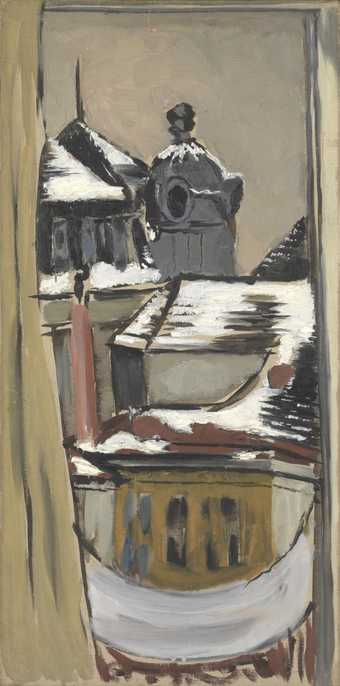
Marie-Louise Von Motesiczky
View from the Window, Vienna
(1925)
Tate
What better place to paint on a cold day than sitting inside, observing a winter scene from your window? The artist is able to capture the frosty landscape outside, but does not need to leave the warmth of their home or studio.
This is the view from Marie-Louise von Motesiczky’s fourth-floor flat in Vienna (the cupola in the upper centre belongs to the now-demolished Johann Strauß-Theater). The artist uses her window and curtain to frame the scene outside. The snow-covered buildings are painted with loose brush strokes in muted tones of grey and pale pink. This was the first time the artist had painted in this style, ‘perhaps because’, she said, ‘fresh snow is so striking and refreshing in a town’.
Tacita Dean Majesty 2006
Tacita Dean’s work is created from a photograph she took of the majestic Fredville oak tree in Kent. This is one of the largest and oldest complete oak trees in England. She painted the area around the tree’s leafless branches and trunk white, isolating its structure and form. The weathered skeleton feels symbolic of the passage of time. It's an emblem of endurance and strength that has already seen many winters and will no doubt see many more.
Stanislawa De Karlowska, Berkeley Square c.1935
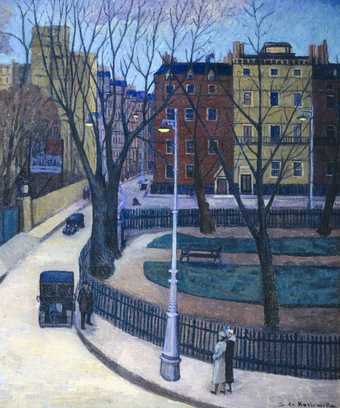
Stanislawa De Karlowska
Berkeley Square
(c.1935)
Tate
Stanislawa de Karlowska painted a number of pictures showing central London squares. Here, the streets in the winter evening are lit by streetlamps. They are almost empty of people apart from two women, dwarfed by the surrounding square, walking towards a waiting taxi driver. The high vantage point suggests the isolation of the modern city. The viewer, like the artist, looks down on the fleeting world of the square.
Briton Rivière, Beyond Man’s Footsteps exhibited 1894
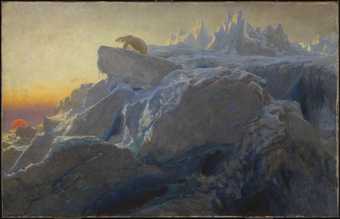
Briton Riviere
Beyond Man’s Footsteps
(exhibited 1894)
Tate
Animal painter Briton Rivière was interested in his friend Charles Darwin’s ideas on evolution and the relationship of animals to humans. This dramatic icy landscape represents the Arctic as a place of extreme and sublime beauty. Humans are nowhere to be seen and the polar bear reigns. Rivière painted the scene from his imagination based on written accounts of Arctic explorers. The bear was drawn from one in London Zoo.
Explore more wintry artworks from our collection in Winter by Kirsteen McSwein, available from Tate shops.
© Tate Publishing, text by Kirsteen McSwein

